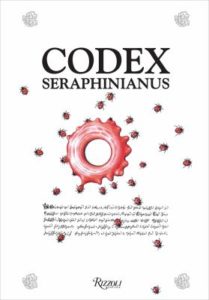
Welcome to the strange and fantastic experience that is the Codex Seraphinianus. Part encyclopedia, part fantasy world, and part art piece, this book is both beautiful and entrancing. It was a labor of love that took the author, Luigi Serafini, three years to complete. The author has cited different inspirations for the book, including God and a white cat.
When you open the Codex Serphinianus you come to understand why it took so long to finish. Each page is a work of art. Some pages have charts and maps depicting a world that never existed, while others are covered in a beautiful flowering script that is complete nonsense. One thing that you will find consistent throughout the Codex is the attention to detail and the odd blend of the known and unknown.
One of the most fascinating aspects of the Codex Seraphinianus is that it looks and feels exactly like an encyclopedia for a different planet, complete with a mysterious alphabet and detailed charts of fictitious animals and vegetation. The book has eleven chapters separated into two main sections: the natural world and human life. The first section depicts gorgeous yet slightly uncomfortable images of animals and plants that could have jumped out of a Seuss picture book. The second section, which focuses on human life, is where the book shines. Entire rituals, tools, writing systems, and clothing are all present in a manner that fascinates and brings wonder to the reader.
By far one of the most disconcertingly beautiful books ever composed, the power of the Codex Seraphinianus is mixing what could very well be our own world with the impossibilities of somewhere else. It creates an image of a magical and yet familiar place.
For reference, here are the eleven chapters in the Codex Seraphinianus:
- Types of flora: strange flowers, trees that uproot themselves and migrate, etc.
- Fauna (animals), including surreal variations of the horse, hippopotamus, rhinoceros, and birds
- An apparently separate kingdom of odd bipedal creatures
- Physics and chemistry (generally considered the most abstract, enigmatic chapter)
- Bizarre machines and vehicles
- The humanities: biology, sexuality, aboriginal peoples, including some examples with plant life and tools (e.g. pens, wrenches) grafted onto the human body
- History: people (some only vaguely human) of unknown significance, with their times of birth and death; scenes of historical and possibly religious significance; burial and funereal customs
- The Codex’s writing system, including punctuation marks, the text being written, and experiments performed upon the text
- Food, dining practices, garments
- Bizarre games, including cards, board games, and athletic sports
- Architecture
Review by Nora (General Reference)




